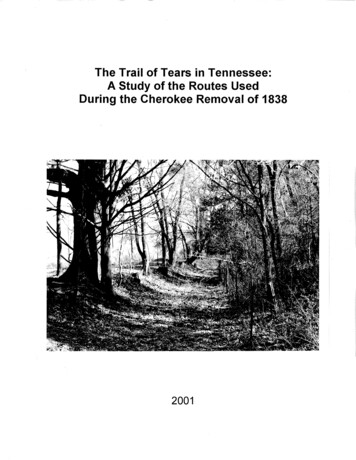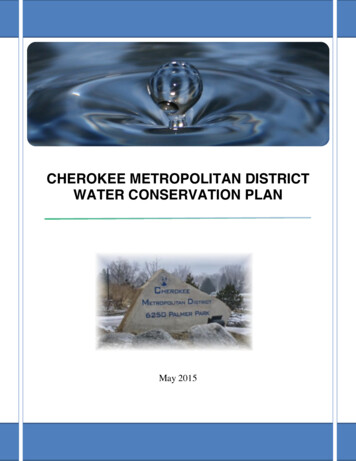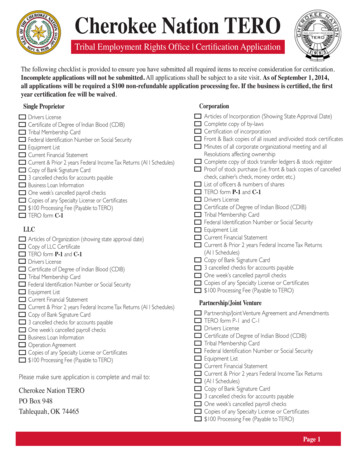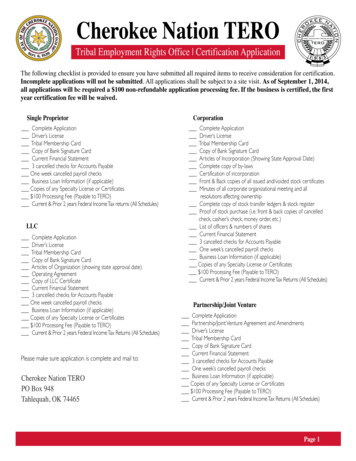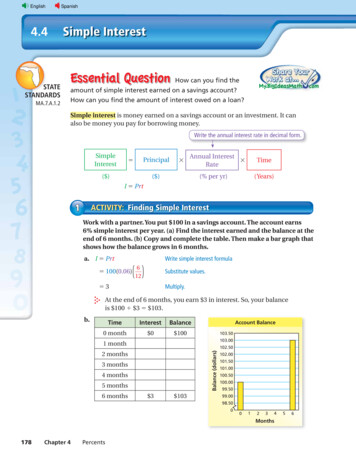
Transcription
CHEROKEE 180 EOWNER'S HANDBOOK
WARNINGThe rudder pedals are suspended from a torque tubewhich extends across the fuselage. The pilot shouldbecome familiar with the proper positioning of hisfeet on the rudder pedals so as to avoid interferencewith the torque tube when moving the rudder pedalsor operating the toe brakes.757 436
CHEROKEE 180 EPA 28 180This handbook for airplanes withserial nos. 28 5601 through 28-5859.Owner's HandbookPiper Aircraft Corporation, Vero Beach, FloridaU.S.A.
NOTICETHIS HANDBOOK IS NOT DESIGNED, NOR CAN ANYHANDBOOK SERVE, AS A SUBSTITUTE FOR ADEQUATE ANDCOMPETENT FLIGHT INSTRUCTION, OR KNOWLEDGE OF THECURRENT AIRWORTHINESS DIRECTIVES, THE APPLICABLEFEDERAL AIR REGULATIONS, AND ADVISORY CIRCULARS. ITIS NOT INTENDED TO BE A GUIDE OF BASIC FLIGHTINSTRUCTION, NOR A TRAINING MANUAL.THE HANDBOOK IS DESIGNED:1. TO HELP YOU OPERATE YOUR CHEROKEE WITHSAFETY AND CONFIDENCE.2. TO MORE FULLY ACQUAINT YOU WITH THE BASICPERFORMANCE AND HANDLING CHARACTERISTICSOF THE AIRPLANE.3. TO MORE FULLY EXPLAIN YOUR CHEROKEE'SOPERATION THAN IS PERMISSIBLE TO SET FORTH INTHE AIRPLANE FLIGHT MANUAL.IF THERE IS ANY INCONSISTENCY BETWEEN THISHANDBOOK AND THE AIRPLANE FLIGHT MANUAL APPROVEDBY THE F.A.A., THE AIRPLANE FLIGHT MANUAL SHALLGOVERN.Revised text and illustrations shall be indicated by ablack vertical line in the margin opposite the change.A line opposite the page number will indicate thatmaterial was relocated.Additional copies of this manual, Part No. 753 806,may be obtained fromyour Piper Dealer.Published byPUBLICATIONS DEPARTMENTPiper Aircraft Corporation75 3 806Issued: October 1969Revised: January 1974
INDEXSECTION IPageSpecifications:PerformanceWeightsPower PlantFuel and Oil11222Baggage2Dimensions3Landing Gear3SECTION IIDesign Information:Engine and PropellerStructuresLanding GearControl SystemsFuel SystemElectrical SystemHeating and Ventilating SystemCabin FeaturesSECTION IIIOperating Instructions:PreflightStarting EngineWarm-Up and Ground CheckTake-OffClimb .StallsCruisingApproach and LandingStopping Engine69101555567791313.16161719192020212223
INDEX (cont)SECTION III (cont)Engine Power LossMooringWeight and BalanceOperating TipsPage23242424SECTION IVEmergency Procedures:IntroductionEngine Power Loss During TakeoffEngine Power Loss In FlightPower Off LandingFireLoss of Oil PressureLoss of Fuel PressureHigh Oil TemperatureAlternator FailureEngine RoughnessSpinsOpen Door27272728293031323233333435SECTION VPerformance Charts:Altitude Conversion ChartTakeoff Distance vs Density AltitudeRate of Climb vs Density AltitudeRange vs Density AltitudeTrue Airspeed and RPM vs Density AltitudeLanding Distance vs Density AltitudePower Setting Table3636373839404142753 806740118
INDEX (cont)SECTION VIGeneral Maintenance:Landing Gear ServiceBrake ServiceTire InflationCare of Windshield and WindowsBattery ServiceFuel and Oil RequirementsFuel System .Care of Air FilterLeveling and RiggingSerial Number Plate753 806740118Page4343454546464747484849
SECTION ISPECIFICATIONSPerformance1Weights2Power Plant2Fuel and Oil2Baggage2Dimensions3Landing Gear3691015
CHEROKEE " E "SECTION ISECTION ISPECIFICATIONSPERFORMANCEPublished figures are for standard airplanes flown at gross weightunder standard conditions at sea level, unless otherwise stated.Performance for a specific airplane may vary from published figuresdepending upon the equipment installed, the condition of engine,airplane and equipment, atmospheric conditions and piloting technique.Each performance figure below is subject to the same conditions as onthe corresponding performance chart from which it is taken in thePerformance Charts Section.Take-off Run (maximum effort, 25 flap) (ft)Take-off over 50-ft barrier (maximum effort,25 flap) (ft)Best Rate of Climb Speed (mph)Rate of Climb (ft per min)Service Ceiling (ft)Absolute Ceiling (ft)Top Speed (mph)Optimum Cruising Speed (75% power, optimumaltitude) (mph)Cruising Range (75% power, optimum altitude) (mi)Optimum Cruising Range (55% power, optimumaltitude) (mi)Stalling Speed (flaps down) (mph)Stalling Speed (flaps up) (mph)Landing Roll (flaps down) (ft)Landing Roll over 50-ft barrier (ft)753 0011501
SECTION ICHEROKEE " E "SPECIFICATIONS (cont):WEIGHTSGross Weight (lbs)Empty Weight (Standard) (lbs)USEFUL LOAD (Standard) (lbs)240013101090POWER PLANTEngine (Lycoming)Rated HorsepowerRated Speed (rpm)Bore (in.)Stroke (in.)Displacement (cu in.)Compression RatioDry Weight 285M76EMMS60FUEL AND OILFuel Capacity (U.S. gal)Oil Capacity (qts)Fuel, Aviation Grade (min octane)50891/96BAGGAGEMaximum Baggage (lbs)Baggage Space (cu ft)Baggage Door Size (in.)22002420 x 22691212
CHEROKEE " E "SECTION ISPECIFICATIONS (cont):DIMENSIONSWing Span (ft)Wing Area (sq ft)Wing Loading (lbs per sq ft)Length (ft)Height (ft)Power Loading (lbs per hp)3016015.023.57.313.3LANDING GEARWheel Base (ft)Wheel Tread (ft)Tire Pressure (psi) NoseMainTire SizeNose (4 ply rating)Main (4 ply rating)6910156.21024246.00 x 66.00 x 63
SECTION I4CHEROKEE " E "691015
SECTION IIDESIGN INFORMATIONEngine and Propeller5Structures5Landing Gear6Control Systems7Fuel System7Electrical System9Heating and Ventilating System13Cabin Features13691015
CHEROKEE " E "SECTION IISECTION IIDESIGN INFORMATIONENGINE AND PROPELLERThe Cherokee " E " is powered by a Lycoming O-360-A4Afour cylinder, direct drive, horizontally opposed engine rated at180 HP at 2700 RPM. It is furnished with a starter, 60 ampere12 volt alternator, shielded ignition, vacuum pump drive, fuelpump, and a dry, automotive type carburetor air filter.The exhaust system is of the cross-over type to reduce backpressure and improve performance. It is made entirely from stainless steel and is equipped with dual mufflers. A heater shroudaround the mufflers is provided to supply heat for the cabin andwindshield defrosting.The Sensenich M76EMMS60 fixed-pitch propeller is madefrom a one-piece alloy forging.STRUCTURESAll structures are of aluminum alloy construction and aredesigned to ultimate load factors well in excess of normal requirements. All exterior surfaces are primed with etching primerand painted with acrylic enamel.The wings are attached to each side of the fuselage by inserting the butt ends of the respective main spars into a spar boxcarry-through which is an integral part of the fuselage structure,providing in effect a continuous main spar with splices at eachside of the fuselage. There are also fore and aft attachments at6910155
SECTION IICHEROKEE " E "the rear spar and at an auxiliary front spar.The wing airfoil section is a laminar flow type, NACA659415 with the maximum thickness about 40% aft of the leadingedge. This permits the main spar carry-through structure to belocated under the rear seat providing unobstructed cabin floorspace ahead of the rear seat.LANDING GEARThe three landing gears use a Cleveland 6.00 x 6 wheel, themain wheels being provided with Cleveland single disc hydraulicbrake assemblies, No. 30-55. All wheels use 6.00 x 6 four plytires with tubes.The nose gear is steerable through a 44 degree arc by use ofthe rudder pedals. A spring device is incorporated in the rudderpedal torque tube assembly to aid in rudder centering and toprovide rudder trim. The nose gear steering mechanism also incorporates a hydraulic shimmy dampener.The three struts are of the air-oil type, with the normalextension being 3.25 inches for the nose gear and 4.50 inchesfor the main gear.The standard brake system for the Cherokee consists of ahand lever and master cylinder which is located below and behindthe left center of the instrument sub-panel. The brake fluidreservoir is installed on the top left front face of the firewall.The parking brake is incorporated in the master cylinder and isactuated by pulling back on the brake lever, depressing the knobattached to the handle and releasing the brake lever. To releasethe parking brake, pull back on the lever to disengage the catchmechanism and allow the handle to swing forward.Optional toe brakes are available to supplement the standardhand lever and parking brake system.6691015
CHEROKEE " E "SECTION IICONTROL SYSTEMSDual controls are provided as standard equipment with acable system used between the controls and the surfaces. Thehorizontal tail is of the Flying Tail type (stabilator), with a trimtab mounted on the trailing edge of the stabilator to reduce thecontrol system forces. This tab is actuated by a control wheelon the floor between the front seats. The stabilator providesextra stability and controllability with less size, drag and weightthan conventional tail surfaces. The ailerons are provided with adifferential action which tends to reduce adverse yaw in turningmaneuvers, and which also reduces the amount of coordinationrequired in normal turns. A rudder trim adjustment is mounted onthe right side of the pedestal below the throttle quadrant andpermits directional trim as needed in flight.The flaps are manually operated, balanced for light operatingforces and spring-loaded to return to the up position. A pastcenter lock incorporated in the actuating linkage holds the flapwhen it is in the up position so that it may be used as a step onthe right side. The flap will not support a step load except whenin the full up position, so it must be completely retracted whenused as a step. The flaps have three extended positions: 10, 25and 40 degrees.FUEL SYSTEMFuel is stored in two twenty-five gallon tanks which aresecured to the leading edge structure of each wing by screws andnut plates. This allows easy removal for service or inspection.An auxiliary electric fuel pump is provided in case of failureof the engine-driven pump. The electric pump should be on forall take-offs and landings, and when switching tanks. The pumpswitch is located in the switch panel above the throttle quadrant.Each tank has an individual quick drain located at thebottom, inboard rear corner, and should be drained to check for6910157
CHEROKEE " E "SECTION IICARBURETORVENTFUEL PRESSURE GAUGEFUEL QUANTITY GAUGESVENTENGINE FUEL PUMPELECTRIC FUEL PUMPVENTDRAINGASCOLATORPRIMERFUEL SELECTOR VALVELEFT TANKRIGHT TANKDRAINDRAINFUEL SYSTEM SCHEMATIC8691015
CHEROKEE " E "SECTION IIwater before each flight. The fuel strainer, which is also equippedwith a quick drain, is located on the front lower left corner ofthe firewall. This strainer should be drained regularly to checkfor water or sediment accumulation.Fuel quantity and pressure are indicated on gauges locatedin a cluster on the left side of the instrument panel.ELECTRICAL SYSTEMThe electrical system includes a 14 volt, 60 amp alternator,battery, voltage regulator, overvoltage relay and master switchrelay. The battery is mounted in a stainless steel box immediately aft of the baggage compartment. The regulator and overvoltage relay are located on the forward left side of the fuselagebehind the instrument panel.Electrical switches are located on the right center instrument panel, and the circuit breakers are located on the lowerright instrument panel. A rheostat-switch on the left side of theswitch panel controls the navigation lights and the dome instrument light. It also dims the dome light. The similar switch onthe right side controls and dims the panel lights.Circuit Breaker Panel753 806740118
SECTION IICHEROKEE " E "Standard accessories include a starter, electric fuel pump,stall warning indicator, cigar lighter,fuel gauge and ammeter. Thenavigation lights, anti-collision light, landing light, instrumentlighting and cabin dome light are optional. Circuits will handlean entire complement of communications and navigational equipment.The alternator system offers many advantages over the generator system both in operation and maintenance. The main advantage is full electrical power output at lower engine RPM.This is a great improvement for radio and electrical equipmentoperation. Since the alternator output is available at all times,the battery will be charging for a greater percentage of use. Thiswill make cold-morning starting easier.The words "master switch" used hereafter in this manualindicate both sides of the switch, battery side "BAT" and alternator side "ALT" are to be depressed simultaneously to Off orOn as directed.Unlike previous generator systems, the ammeter does notindicate battery discharge; rather it displays in amperes the loadplaced on the alternator. With all electrical equipment off (exceptmaster switch) the ammeter will be indicating the amount ofcharging current demanded by the battery. As each item of electrical equipment is turned on, the current will increase to a totalappearing on the ammeter. This total includes the battery. Themaximum continuous load for night flight, with radios on, is about30 amperes. This 30 ampere value, plus approximately two amperes for a fully charged battery, will appear continuously underthese flight conditions. The amount of current shown on theammeter will tell immediately if the alternator system is operatingnormally, as the amount of current shown should equal the totalamperage drawn by the equipment which is operating.If no output is indicated on the ammeter during flight, reducethe electrical load by turning off all unnecessary electrical equipment. Check both 5 ampere field breaker and 60 ampere outputbreaker and reset if open. If neither circuit breaker is open, turnoff the "ALT" switch for 1 second to reset the overvoltage10753 806740118
CHEROKEE " E "SECTION IIELECTRICAL SYSTEM69101511
SECTION IICHEROKEE "E"CherokeeCabin Heat, Defroster, Fresh AirHEATING AND VENTILATING SYSTEM12691212
CHEROKEE " E "SECTION IIrelay. If ammeter continues to indicate no output, maintain minimum electrical load and terminate flight as soon as practical.Maintenance on the alternator should prove to be a minorfactor. Should service be required, contact the local Piper Dealer.HEATING AND VENTILATING SYSTEMHeat for the cabin interior and the defroster system is provided by a heater muff attached to the exhaust system. Theamount of heat desired can be regulated with the controls locatedon the far right side of the instrument panel.Fresh air inlets are located in the leading edge of the wingat the intersection of the tapered and straight s e c t i o n s . A largeadjustable outlet is located on the side of the cabin near thefloor at each seat location. Cabin air is exhausted through anoutlet located below the rear seat.CABIN FEATURESThe instrument panel of the Cherokee is designed to accommodate the customary advanced flight instruments and thenormally required power plant instruments. The Artifical Horizonand Directional Gyro are vacuum operated through use of avacuum pump installed on the engine, while the Turn and Bankinstrument is electrically operated. Above the Attitude Gyro aretwo lights which indicate high or low vacuum. A natural separation of the flight group and the power group is provided by placingthe flight group in the upper instrument panel and the powergroup in the center and lower instrument panels.The cabin interior includes a pilot storm window, two sunvisors, ash trays, two map pockets, and pockets on the backs ofeach front seat. The front s e a t s are adjustable fore and aft forpilot-passenger comfort and e a s e of entry and exit. Arm restsare also provided for the front s e a t s .The 24 cubic foot baggage area may be reached from thecabin or through a large 20 x 22 inch outside door.69121213
14691212
CHEROKEE " E "SECTION IINOTES69101515
SECTION IIIOPERATING INSTRUCTIONSPreflight16Starting Engine17Warm-Up and Ground Check19Take-Off19Climb20Stalls20Cruising21Approach and Landing22Stopping Engine23Engine Power Loss23Mooring24Weight and Balance24Operating Tips24691015
CHEROKEE " E "SECTION IIISECTION IIIOPERATING INSTRUCTIONSPREFLIGHT1. Master switch and ignition OFF.2. a. Check for external damage and operational interference of control surfaces or hinges.b. Insure that wings and control surfaces are free ofsnow, ice or frost.3. a. Visually check fuel supply and secure caps.69101516
SECTION IIICHEROKEE " E "b. Drain fuel tank sumps (two).c. Drain fuel system sump (left side of aircraft).d. Check that fuel system vents are open.e. Check main landing gear shock struts for proper inflation (approximately 4.50 inches showing).f . Check tires for cuts, wear and proper inflation.4. a. Check windshield for cleanliness.b. Check propeller and spinner for defects or nicks.c. Check for obvious fuel or oil leaks.d. Check oil level (insure dipstick is properly seated).e. Check cowling and inspection covers for security,f . Check nose wheel tire for inflation and wear.g. Check nose gear shock strut for proper inflation(approximately 3.25 inches showing).h. Check for foreign matter in air inlet.5. a. Stow tow-bar and control locks if used.b. Check baggage for storage and security.c. Close and secure the baggage compartment door.6. a. Upon entering airplane remove and stow control columnlock pin in side pocket. Check that all primary flight controlsoperate properly.b. Close and secure cabin door.c. Check that required papers are in order and in theairplane.d. Fasten safety belts.STARTING ENGINE1. Set parking brake ON.2. Set the carburetor heat control in the full COLD position.3. Select the desired tank with fuel selector valve.Starting Engine When Cold:1. Open throttle approximately 1/4 inch.2. Turn the master switch ON.3. Turn the electric fuel pump ON.4. Move the mixture control to FULL RICH.17753 806740118
CHEROKEE " E "SECTION5. Engage the starter by rotating magneto switch clockwiseand pressing in.6. When the engine fires, advance throttle to desired setting.If the engine does not fire within five to ten seconds, disengagestarter and prime with one to three strokes of the priming pump.Repeat the starting procedure.Starting Engine When Hot:1. Open the throttle approximately 1/2 inch.2. Turn the master switch ON.3. Turn the electric fuel pump ON.4. Put mixture control in IDLE CUT-OFF.5. Engage the starter by rotating magneto switch clockwiseand pressing in. When the engine fires, advance the mixturecontrol and move the throttle to desired setting.Starting Engine When Flooded:1. Open the throttle full.2. Turn the master switch ON.3. Turn the electric fuel pump OFF.4. Put mixture control in IDLE CUT-OFF.5. Engage the starter by rotating magneto switch clockwiseand pressing in. When the engine fires, advance the mixturecontrol and retard the throttle.When the engine is firing evenly, advance the throttle to800 RPM. If oil pressure is not indicated within thirty seconds,stop the engine and determine the trouble. In cold weather it willtake a few seconds longer to get an oil pressure indication. Ifthe engine has failed to start, refer to the "Lycoming OperatingHandbook, Engine Troubles and Their Remedies."Starter manufacturers recommend that cranking periods belimited to thirty seconds with a two minute rest between crankingperiods. Longer cranking periods will shorten the life of thestarter.69101518
SECTION VPERFORMANCE CHARTSAltitude Conversion Chart36Takeoff Distance vs Density Altitude37Rate of Climb vs Density Altitude38Range vs Density Altitude39True Airspeed and RPM vs Density Altitude40Landing Distance vs Density Altitude41Power Setting Table42753 806740118
CHEROKEE " E "SECTION IIIThe take-off technique is conventional for the Cherokee.The tab should be set slightly aft of neutral, with the exactsetting determined by the loading of the aircraft. Allow the airplane to accelerate to 50 to 60 MPH, then ease back on thewheel enough to let the airplane fly itself off the ground. Premature raising of the nose, or raising it to an excessive anglewill result in a delayed take-off. After take-off let the aircraftaccelerate to the desired climb speed by lowering the noseslightly.Take-offs are normally made with flaps up. However, forshort field take-offs, and for take-offs under difficult conditionssuch as deep grass or on a soft surface, distances can be reduced appreciably by lowering flaps to 25 .CLIMBThe best rate of climb at gross weight will be obtained at85 MPH. The best angle of climb may be obtained at 74 MPH. Atlighter than gross weight these speeds are reduced somewhat.For climbing en route a speed of 100 MPH is recommended. Thiswill produce better forward speed and increased visibility overthe nose during the climb.STALLSAll controls are effective at speeds down through the stallingspeed, and stalls are gentle and easily controlled.Stall speed chart on following page is at gross weight. Stallspeeds at lower weights will be correspondingly less.69101520
CHEROKEE " E "SECTION IIISTALL SPEED TABLEAngle of Bank0 20 40 60 Flaps 40 57 MPH59 MPH65 MPH81 MPHFlaps Retracted67 MPH69 MPH77 MPH95 MPHPower Off - Gross Weight 2400 lbs.CRUISINGThe cruising speed is determined by many factors includingpower setting, altitude, temperature, loading and equipment installed on the airplane.The normal cruising power is 75% of the rated horsepowerof the engine. True airspeeds which may be obtained at variousaltitudes and power settings can be determined from the chartsin Section V of this handbook .Use of the mixture control in cruising flight reduces fuelconsumption significantly, especially at higher altitudes. Themixture should be leaned during cruising operation above 5000feet altitude and at pilot's discretion at lower altitudes when75% power or less is being used. If any doubt exists as to theamount of power being used, the mixture should be in the FULLRICH position for all operations under 5000 feet.To lean the mixture, pull the mixture control until the enginebecomes rough, indicating that the lean mixture limit has beenreached in the leaner cylinders. Then enrich the mixture bypushing the control towards the instrument panel until engineoperation becomes smooth. The fuel flow meter will give a closeapproximation of the fuel being consumed.If the airplane is equipped with the optional exhaust gas21691015
CHEROKEE " E "SECTION IIItemperature (EGT) gauge, a more accurate means of leaning isavailable to the pilot. For best power mixture, lean the mixtureuntil the peak EGT is reached, then enrich the mixture until thetemperature drops a minimum of 25 F. For best economy mixture,lean until the peak EGT is reached and continue to lean untilthe temperature drops a minimum of 25 F. Do not lean above 75%power.In order to keep the airplane in best lateral trim duringcruising flight, the fuel should be used alternately from eachtank. It is recommended that one tank be used for one hour aftertake-off, then the other tank be used for two hours, then returnto the first tank, which will have approximately one and one halfhours of fuel remaining if the tanks were full at take-off. Thesecond tank will contain approximately one half hour of fuel. Donot run tanks completely dry in flight.APPROACH AND LANDINGBefore landing check list:1. Fuel - on proper tank2. Electric fuel pump - ON3. Mixture - set4. Flaps - set (115 MPH MAX)5. Seat belts - fastenedThe airplane should be trimmed to an approach speed ofabout 85 MPH with flaps up. The flaps can be lowered at speedsup to 115 MPH, if desired, and the approach speed reduced 3MPH for each additional notch of flaps. Carburetor heat shouldnot be applied unless there is an indication of carburetor icing,since the use of carburetor heat causes a reduction in powerwhich may be critical in case of a go-around. Full throttle operation with heat on is likely to cause detonation.The amount of flap used during landings and the speed of theaircraft at contact with the runway should be varied according tothe landing surface and conditions of wind and airplane loading.753 80674011822
SECTION IIICHEROKEE " E "It is generally good practice to contact the ground at minimumpossible safe speed consistent with existing conditions.Normally, the best technique for short and slow landings isto use full flap and enough power to maintain the desired airspeedand approach flight path. Reduce the airspeed during flare outand contact the ground close to stalling speed. After groundcontact hold the nose wheel off as long as possible. As the airplane slows down, drop the nose and apply the brakes. There willbe less chance of skidding the tires if the flaps are retractedbefore applying the brakes. Braking is most effective when backpressure is applied to the control wheel, putting most of theairplane weight on the main wheels. In high wind conditions,particularly in strong crosswinds, it may be desirable to approachthe ground at higher than normal speeds with partial or no flaps.STOPPING ENGINEAt the pilot's discretion, the flaps should be raised and theelectric fuel pump turned off. After parking, the radios should beturned off and the engine stopped by pulling the mixture controlto idle cut-off. The throttle should be left full aft to avoid enginevibration while stopping. Then the magneto and master switchesshould be turned off and the parking brake set.ENGINE POWER LOSSThe most common cause of engine power loss is mismanagement of the fuel. Therefore, the first step to take after enginepower loss is to move the fuel selector valve to the tank notbeing used. This will often keep the engine running even if thereis no apparent reason for the engine to stop on the tank beingused.23691015
CHEROKEE " E "SECTION IIIIf changing to another tank does not restore the engine:1. Check fuel pressure and turn on electric fuel pump if off.2. Push mixture control to full "RICH."3. Check ignition switch. Turn to best operating magneto left, right, or both.MOORINGThe Cherokee should be moved on the ground with the aidof the nose wheel tow-bar provided with each plane and securedin the baggage compartment. Tie down ropes may be secured torings provided under each wing and to the tail skid. The aileronand stabilator controls should be secured by utilization of thecontrol column lock pin in the left hand wheel control column.The rudder is held in position by its connections to the nosewheel steering and normally does not have to be secured. Theflaps are locked when in the full up position and should be leftretracted.WEIGHT AND BALANCEIt is the responsibility of the owner and pilot to determinethat the airplane remains within the allowable weight vs. centerof gravity envelope while in flight. For weight and balance datasee the Airplane Flight Manual and Weight and Balance formsupplied with each airplane.OPERATING TIPSThe following Operating Tips are of particular value in theoperation of the Cherokee.1. Learn to trim for take-off so that only a very light backpressure on the wheel is required to lift the airplane off the69101524
SECTION IIICHEROKEE " E "ground.2. The best speed for take-off is about 60 MPH under normalconditions. Trying to pull the airplane off the ground at too lowan airspeed decreases the controllability of the airplane in eventof engine failure.3. Flaps may be lowered at airspeeds up to 115 MPH. Toreduce flap operating loads, it is desirable to have the airplaneat a slower speed before extending the flaps.4. Before attempting to reset any circuit breaker, allow atwo to five minute cooling off period.5. Before starting the engine, check that all radio switches,light switches, and the pitot heat switch are in the off positionso as not to create an overloaded condition when the starter isengaged.6. The overvoltage relay is provided to protect the electronics equipment from a momentary overvoltage condition (approximately 16.5 volts and up), or a catastrophic regulator failure.In the event of a momentary condition, the relay will open andthe ammeter will indicate " 0 " output from the alternator. Therelay may be reset by switching the''ALT''switch to "OFF" forapproximately one second and then returning the "ALT" switch to"ON."7. The vacuum gauge is provided to monitor the pressureavailable to assure the correct operating speed of the vacuum drivengyroscopic flight instruments. It also monitors the condition of thecommon air filter by measuring the flow of air thru the filter.If the vacuum gauge does not register 5" .1" Hg at 2000RPM, the following items should be checked before flight:a. Common air filter, could be dirty or restricted.b. Vacuum lines could be collapsed or broken.c. Vacuum pump, worn.d. Vacuum regulator, not adjusted correctly. The pressure,even though set correctly, can read lower under two conditions: (1)Very high altitude, above 12000 feet, (2) Low engine RPM usually onapproach or during training maneuvers. This is normal and should notbe considered a malfunction.25753 806740118
CHEROKEE " E "SECTION III8. The shape of the wing fuel tanks is such that in certainmaneuvers the fuel may move away from the tank outlet. If the outletis uncovered, the fuel flow may be interrupted and a temporary loss ofpower may result. Pilots can prevent inadvertent uncovering of theoutlet by avoiding maneuvers which could result in uncovering theoutlet.Running turning takeoffs should be avoided as fuel flowinterruption may occur if tank in use is not full.Prolonged slips or skids in any pitch attitude or other unusualmaneuvers which could cause uncovering of the fuel outlet must beavoided when tank being used is not full.9. The rudder pedals are suspended from a torque tube whichextends across the fuselage. The pilot should become familiar with theproper positioning of his feet on the rudder pedals so as to avoidinterference with the torque tube when moving the rudder pedals oroperating the toe brakes.10. Anti-collision lights should not be operating when flyingthrough overcast and clouds since reflected light can produce spacialdisorientation. Do not operate strobe lights when taxiing in the vicinityof other aircraft.753 80674011826
SECTION IVEMERGENCY PROCEDU
The pilot should become familiar with the proper positioning of his feet on the rudder pedals so as to avoid interference with the torque tube when moving the rudder pedals or operating the toe brakes. 757 436. CHEROKEE 180 E PA 28 180 This handbook for airplanes with serial nos. 28 5601 through 28-5859. Owner's Handbook Piper Aircraft Corporation, Vero Beach, Florida U.S.A. NOTICE THIS .
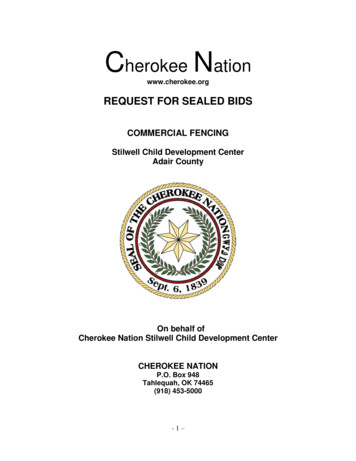
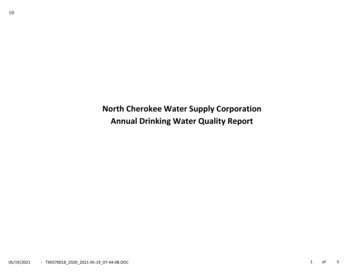
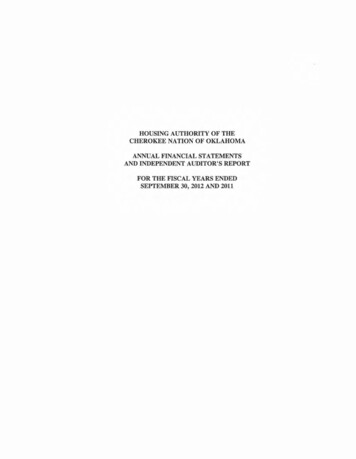
![Amalfi 180 Led Otto [28.01.22]](/img/23/022e99f7-d57e-51b4-8c41-152437a0d633.jpg)
